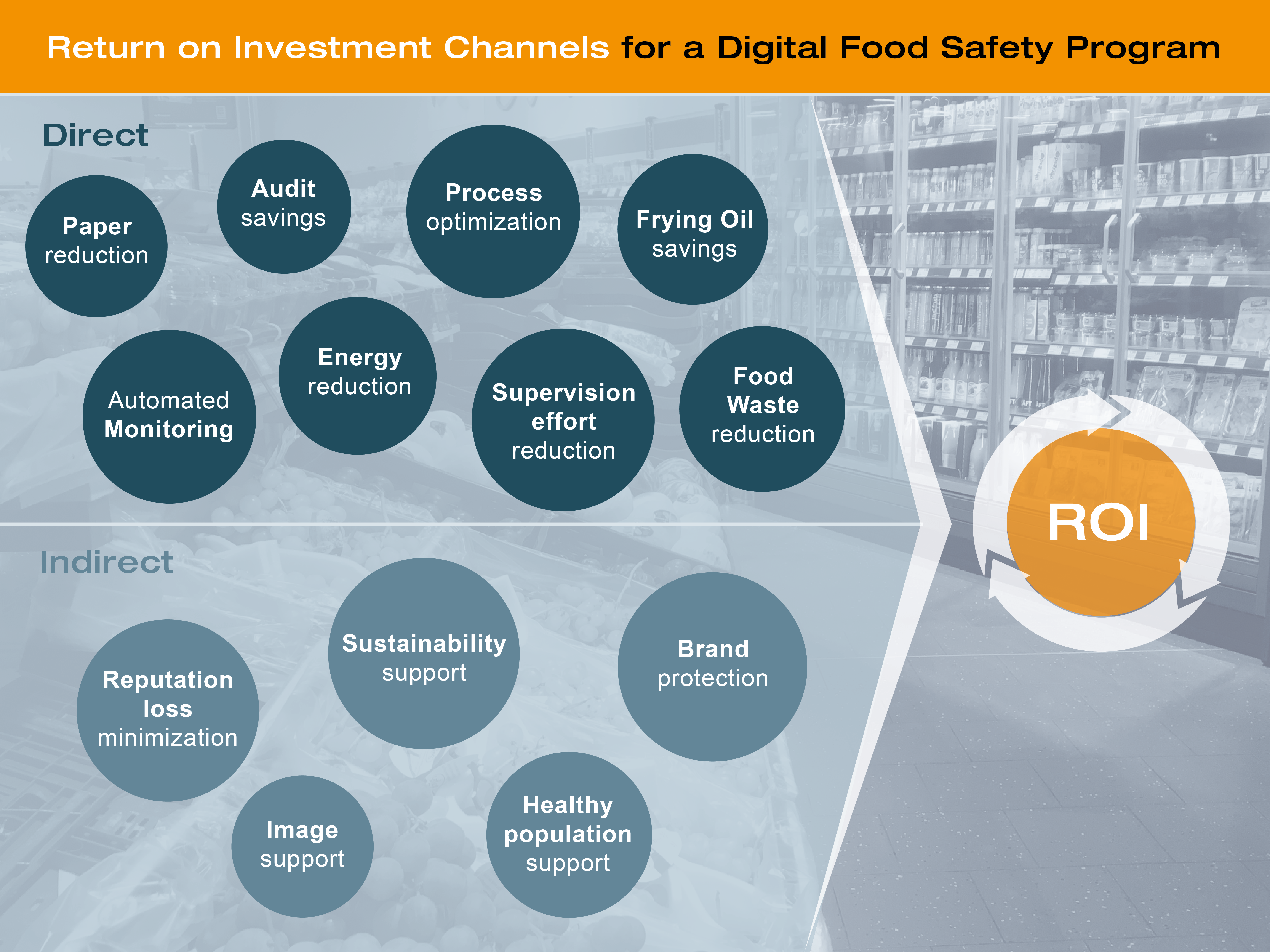
At the recent GFSI Conference in Seattle, I had the special opportunity to speak at a Breakout Session about how the Internet of Things (IoT) and blockchain can enhance food safety. This was a great experience and a fantastic new format for the conference, based on the popular ‘Shark Tank’ TV programme.
The innovative approach that I presented was based on Testo’s digital food safety management system, which is already used in the field globally. I realised during the partly tricky questions of the ‘sharks’ – food safety leaders from some of the world’s most prominent brands – that a ‘return on investment’ (ROI) was particularly of interest when it comes to considering a digital food safety management system. Since the Shark Tank was on a strict time-limit, the countdown clock did not allow me to deep dive into this subject.
Meanwhile, it’s an uncertain time for food industry businesses due to the COVID-19 pandemic. Due to the coronavirus, many businesses have been forced to stop operations. In addition to all the challenges of this pandemic, the consideration of profitability will be of particular concern to all companies in 2020. Let’s take a closer look at return on investment in terms of food safety.
How to Calculate Return on Investment of Food Safety?
Food industry companies have many different ways to build their food safety programme, and accordingly many factors of efficiency. Today, most companies have been implementing their programmes for years and have ‘grown up’ the system. With the invention of technology, more and more digital systems are now becoming common. There is no doubt that new technology and digitisation offer many advantages: more security, visibility and efficiency. However, comprehensive digital solutions are expensive, and the expenses become more complex when you consider both upfront and recurring costs. Still, food safety is often more of a company policy or even philosophy rather than a bothersome issue – it is a highly cost-relevant factor. In the end, the company’s business purpose is earning money and staying profitable.
How can the return on investment of digital food safety be calculated? Is it possible to determine a price for safety at all? Food safety managers could have a much better negotiating position if they could show how digital food safety systems can be a positive business case from an economic point of view. Since I was highly involved in the development and launch of one of the first digital food safety management systems on the market, I gained many insights into the positive economic effects.
My experience clearly shows that the benefits of digital food safety are diverse. They range from more sustainable and reliable processes to significant cost and time savings. A calculation should therefore consider both the reduced risks and the optimised processes.
For grocery stores specifically, these ROI channels are relevant:
- Time-consuming in-house audits can be performed/prepared online
- Improved quality processes save costs for staff training
- Automated temperature monitoring replaces manual interaction
- Optimised energy adjustments reduce operating costs
- Less food waste
At this point, I would like to highlight the impact of digital checklists and remote temperature monitoring as part of an integrated digital food safety solution with an overall dashboard visibility. These two core functionalities contribute significantly to a positive business case:
- Digital checklists – Conducting food safety checks, in-house audits and trainings at higher efficiency:
- Cost savings by eliminating paper printouts, printer toner, folders, pens etc. Plus the impact on protection of the environment!
- Extensive time (and wage) savings for managers and operators by eliminating manual records, site visits, subsequent documentation, trainings etc.
- Precious time that can be used for more valuable tasks, such as the continuous improvement of your food safety programme based on comprehensive analysis and predictive measures – or simply spend more time in front of your customers!
- Remote temperature monitoring – Optimised energy adjustments reduce operating costs:
- How many hours per day do the doors of the cold storage units remain open? Before you get a food safety
issue, it causes immediate energy loss! Energy has become a precious good in terms of our climate responsibility, and it is a cost factor that is multiplied by the number of cold storage units and sites.
- Every grocery store is equipped with hundreds of freezers and coolers. Field studies show that the temperature setting, and control of these machines are far away from being optimal – both in terms of food safety and energy. To be on the safe side, many freezers are set at lower temperatures than necessary. Every degree counts for climate and money.
- How many hours per day do the doors of the cold storage units remain open? Before you get a food safety
In summary, the overall ROI effects are impressive – here an anonymous example of a European grocery chain with 750 stores.
This is one example of many possible scenarios. Every company in the food industry – including manufacturers, grocery stores or restaurant chains – has individual conditions. Contact us – we look forward to extending the conversation on digital food safety management systems and helping you calculate your individually tailored ROI case.
About the author: Stephanie Burchardt is a nutritional scientist and worked for more than 10 years in various food industries as a quality manager and was responsible for food safety and compliance. Since 2007 she has been with Testo SE & Co. KGaA, mainly responsible for product management. Recently she moved to her new role as Senior Strategy Consultant. She is driving the further development of Testo’s innovative digital food safety management solutions, including high-precision measurement technology, to the next generation.

Stephanie Burchardt
Senior Strategy Consultant Food & Life Sciences Solutions
Testo SE & Co. KgaA

 issue, it causes immediate energy loss! Energy has become a precious good in terms of our climate responsibility, and it is a cost factor that is multiplied by the number of cold storage units and sites.
issue, it causes immediate energy loss! Energy has become a precious good in terms of our climate responsibility, and it is a cost factor that is multiplied by the number of cold storage units and sites.